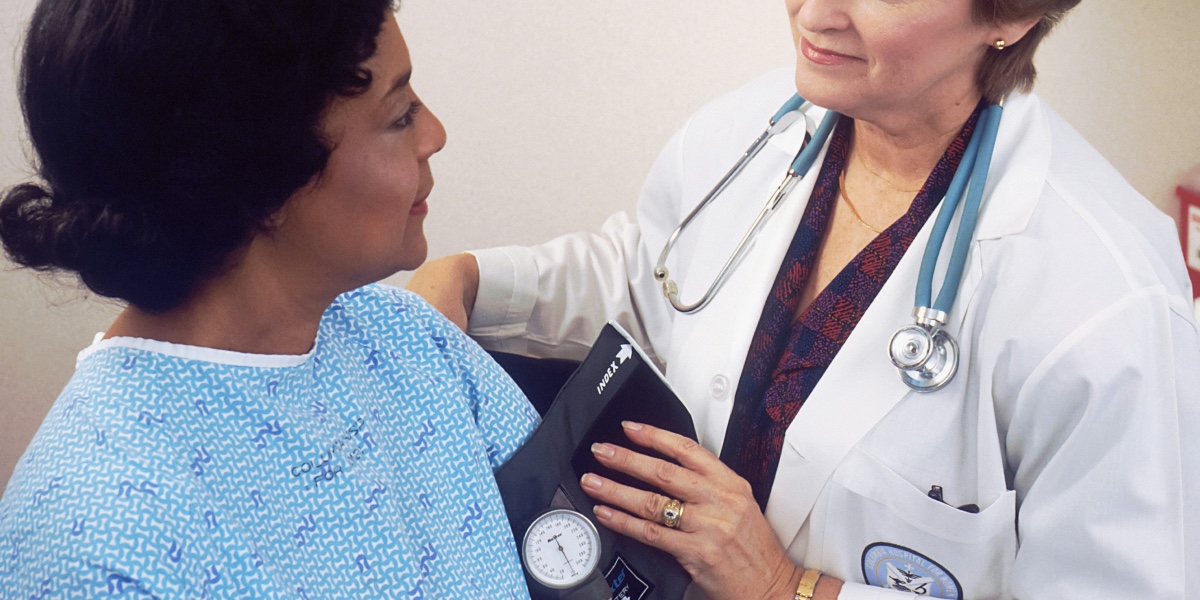Kansas College of Osteopathic Medicine uses an innovative osteopathic curriculum to provide graduates with clinical experience, evidence-based research, and collaborative, interactive, and case-based learning. This prepares students for a medical career, practicing a whole-person osteopathic approach. A Doctor of Osteopathic Medicine (DO) can pursue any medical career and specialty with the proper credentials; this includes providing optimal health to women through obstetrics and gynecology care.
Osteopathy And Women’s Health Care
Osteopathy is a medical approach to patient care that blends humanistic, integrated, and innovative techniques promoting self-regulation, healing, and wellness through mind, body, and spiritual health. Osteopathic doctors consider lifestyle habits as well as mental and physical symptoms in the whole-person approach. Patient-centered care positively impacts the patient’s health outcomes by treating the condition rather than the individual symptoms. This helps osteopathic doctors fully treat the issue and prevent further issues stemming from the condition.
This methodology applies to women’s health, primarily in gynecology, pregnancy, and conditions that may affect fertility and reproductive health. Women’s health care focuses on managing and treating issues unique to women and conditions that affect everyone, but the impact may differ for women specifically.
What is an Osteopathic OB-GYN?
Obstetrics and gynecology, also known as OB-GYN, is a medical specialty that treats women’s health during pregnancy, childbirth, reproductive health and function, hormonal issues, birth control, and fertility issues.
An osteopathic OB-GYN focuses on women’s preventative health care in all areas of OB-GYN, finding the source of the condition and finding a unique solution for the individual patient. This differs from traditional medical doctors who primarily rely on pharmaceutical or general treatments for a condition.
Women may prefer the osteopathic approach to avoid unnecessary medical interventions, especially for labor and delivery. DOs in obstetrics and gynecology search for alternative healing methods, choosing natural methods if possible. This includes osteopathic manipulative treatment, a technique practiced by osteopathic doctors that can reduce back and pelvic pain women may experience during pregnancy, birth, post-partum, or breastfeeding, an alternative method to prescribed medications.
Osteopathic OB-OB-GYNs implement the four tenets of osteopathic medicine for a whole-person approach to assessing, diagnosing, treating, and maintaining women’s health.
The osteopathic tenets are:
- The body is a unit; the person is a unit of body, mind, and spirit.
- The body is capable of self-regulation, self-healing, and health maintenance.
- Structure and function are reciprocally interrelated.
- Rational treatment is based on understanding the basic principles of body unity, self-regulation, and the interrelationship of structure and function.
DO’s practicing patient-centered women’s health care is about creating partnerships between the patient and her healthcare providers, considering all factors that may impact health, the mind, body, and spirit, and considering treatment methods that promote natural healing and improve bodily function to create body unity and maintain wellness. The osteopathic approach allows women to have natural or less invasive treatment methods and options when dealing with their health, especially when pregnant or looking to become pregnant, give birth, or balance hormones.
Osteopathic doctors pursuing an OB-GYN career must complete four years of residency training in this specialty after osteopathic medical school. Kansas College of Osteopathic Medicine offers a Doctor of Osteopathic Medicine Program in Wichita, Kansas, providing unique exposure to interactive learning environments, a comprehensive curriculum, human-patient simulations, modern medical technology skills, clinical skills labs, and interprofessional education activities to prepare graduates for success in the medical field.
DOs can choose a fellowship in Maternal Fetal Medicine, Reproductive Endocrinology/Infertility, Gynecologic Oncology, or Female Pelvic Medicine Reconstructive Surgery. Osteopathic fellows seeking board certification can complete the American College of Osteopathic Obstetricians and Gynecologists credential.
Why Do Some Women Prefer a Whole-Person Approach
Women may prefer osteopathic doctors when choosing their Obstetricians and Gynecologists since DOs use the whole-person approach, consider internal and external lifestyle factors, and use conventional treatments medical doctors use but with complementary osteopathic therapies. Due to the whole-person approach to health care and management, osteopaths consider all treatment methods before jumping to pharmaceutical techniques. KansasCOM provides graduates of the osteopathic medicine program with at least 200 hours of manipulative medicine experience, which manipulates the body’s soft tissue to reduce or relieve pain and discomfort, an alternative treatment to prescription or over-the-counter pain medication.
For graduates pursuing a career in obstetrics and gynecology, they are prepared to provide optimal care for women dealing with women’s health, including complex reproductive health issues that may be a result of more than one cause. Osteopathic OB-GYNs apply the four tenets of osteopathic medicine when treating women, listening to each of their concerns, whether it is menstrual pain, weight issues, pregnancy concerns, postpartum health, or conditions that may result from hormonal imbalances that can cause physical or emotional symptoms. DOs working in obstetrics and gynecology identify the connections between the mind, body, and spirit, considering internal and external lifestyle habits that can contribute to health concerns women may face.
Become a Doctor of Osteopathic Medicine Working in OB-GYN
Start your journey towards becoming an osteopathic OB-GYN by completing the Kansas College of Osteopathic Medicine osteopathic program. It blends traditional osteopathic education with innovative learning techniques, including simulations, clinical experience, medical techniques, and technology knowledge to help graduates provide optimal patient care.
As of 2021, 42,496 physicians work in obstetrics and gynecology, and 3,083 are osteopathic doctors. The OB-GYN career outlook projects a need for 11% more full-time employees (FTEs) from 2018 to 2030. This is due to a drop in the supply of Obstetricians and Gynecologists (-7 %) and a growing demand for OB-GYN FTEs (+ 4%). According to the U.S. Bureau of Labor Statistics, the median annual salary for Obstetricians and Gynecologists is $278,660. The salary may vary due to location, practice, experience, and other factors.
Pursue a career in obstetrics and gynecology to combat the growing demand for full-time professionals and help give women the whole-person and patient-centered health care they deserve.

